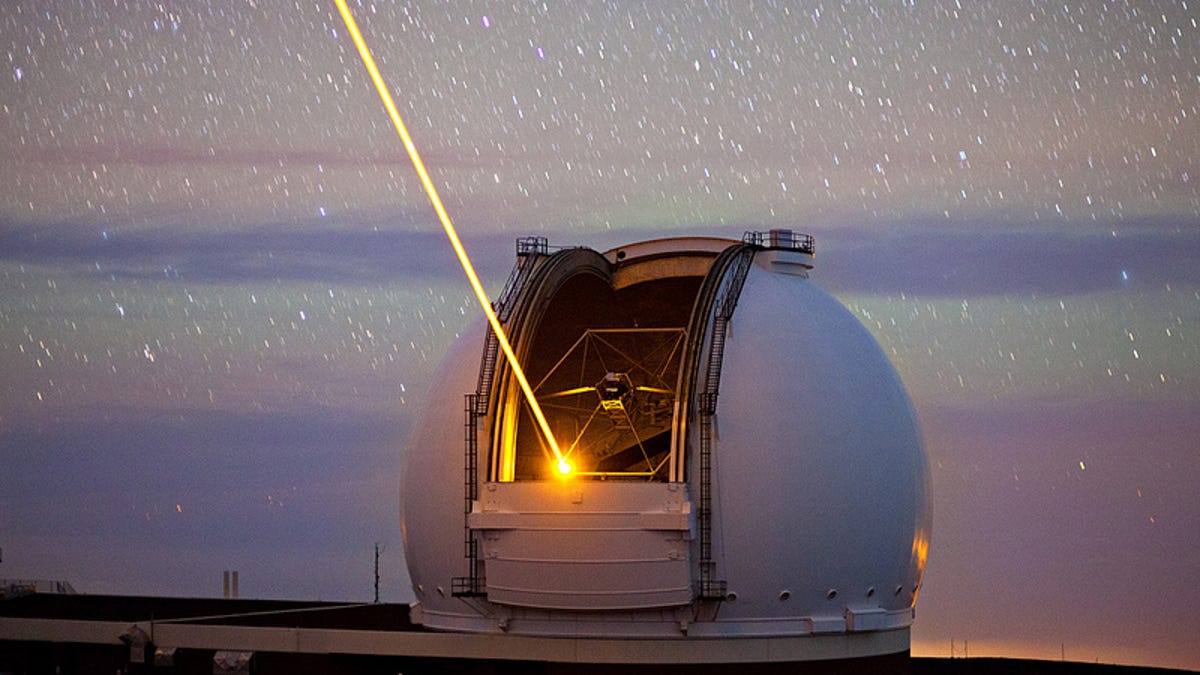Telescopes fire lasers into space in awesome time-lapse video
The observatories at Hawaii's Mauna Kea send beams into the heavens in this gorgeous recording by Sean Goebel.

If you've never been up to Mauna Kea, the summit of the 13,803-foot volcano in Hawaii is one of the best spots for peering at the heavens.
It also happens to be a great place to record time-lapse videos, as photographer Sean Goebel shows us.
An astronomy graduate student at the University of Hawaii, Goebel caught the telescopes firing blindingly cool laser guide star beams into the night sky.
"The lasers are real," Goebel writes in an explanation. "They're used for adaptive optics. Just as waves of heat coming off pavement blur out the detail in faraway objects, winds in the atmosphere blur out fine detail in the stars/galaxies/whatever is being observed.
"This is the reason that stars twinkle. The laser is used to track this atmospheric turbulence, and one of the mirrors in the telescope bends hundreds of times per second in order to cancel out the blurring."
The lasers fired by the Keck I and II, Gemini, and Subaru observatories are quite powerful, ranging from 15 to 40 watts, Goebel notes. The FAA and Space Command must be notified, and people armed with kill switches have to be on alert for airplanes.
Braving freezing temperatures and high winds, Goebel filmed the montage over seven nights in spring and summer of this year. He used a Canon 5D Mark II and a Rebel XT.
"I filmed when the telescopes were doing interesting things (LASERS!), the weather was hopeful, the moon phase was small, and people to drive with were available," he writes.
"This combination of requirements often dictated that I go up on weeknights. I was unwilling to take time off work, so on multiple occasions I worked until the evening, rushed home to grab gear, drove up the mountain, shot time-lapse all night, arrived home around sunrise, slept 1-2 hours, and then headed into work for the next day. Coffee, I love you."
(Via This is Colossal)

